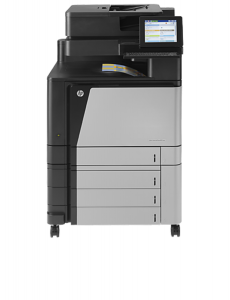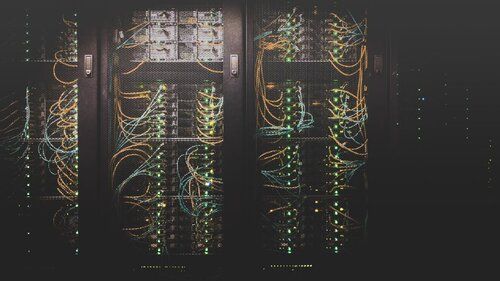Every business, from small to global, needs printers and photocopiers. We have compiled a list of the top nine brands (In no particular order) for you to consider when making your printer and photocopier purchase.
Photocopying is one of the most time saving, efficient, and effective use of technology today. It makes work easier and has great outcomes, such as adding special effects or using different ink colours and printing as many copies as you wish.
With so many models and brands on the Australian market, it may look like a daunting task to compare photocopier suppliers. Although each manufacturer catches up fast on the technological breakthroughs of the competition, and although the gap in prices between photocopier suppliers may tend to become minimal because of the raging commercial war, suppliers have managed to keep their identities. Some are still renowned for their printing quality, and others better cater to the needs of volume printing. Some manage to keep an edge in the price-performance ratio for small business customers; others develop innovative solutions for special requirements.
What are Australia's top photocopier suppliers in 2021, and how did they manage to stay different from each other, in terms of features or prices? Why is getting the perfect copier for one's needs more than about choosing the right model and make and how to get the perfect match?
If you're looking for the best digital copiers of 2021, then you've come to the right place, as on this page we've ranked the best photocopiers money can buy.
There are plenty of reasons why you'd want the best digital copier your budget will allow. Modern offices will find plenty of reasons to use a fast and dependable photocopier. On this page, we'll list the best standalone digital copiers, as well as affordable and convenient multifunction printers (MFPs), which combine printing and scanning functionality in one device and slash the cost of producing printouts using inkjet or laser technologies.
In the past, MFPS had a bit of a bad reputation as a 'jack of all trades', but they have made significant improvements both in terms of quality, value for money and onboard features.
From usage tracking to improve security, auto duplex, mobile and wireless printing or digital touchscreen display, there's now a flurry of options available on the market, for the occasional printout and mailing all the way to digital agencies.
What To Consider When Buying A Photocopier?
Below are five points to consider when putting together your checklist
-
-
Can the photocopier your business is considering handle the capacity needed?
Photocopiers in the shape of multifunction printer come in all shapes and sizes. Many are aimed at the domestic market. Look closely at the stated capacity and match this to your business' workload.
-
-
How important is the quality of scanning and printing?
Many of the latest photocopiers using advanced print technologies that were, up until a short time ago, only found in high-end printers. If possible, look at samples of print and scanned output before making your choice. Many vendors now offer the option of sending samples by post.
-
-
Is fax capability needed?
Fax is far from a dead communications medium, with many large businesses still needing it. Look at the fax capability of the MFP, which today is likely to use the cloud as well as a direct dial to another fax machine.
-
-
Will your company need to manage sensitive information?
Access to the features of a photocopier should be controlled with PIN numbers or passwords. Also, ensure that the MFP only prints the required copies to ensure data security. And think about whether the USB port should be disabled to mitigate any risk.

Does your Business require remote printing?
With the rise of BYOD (Bring Your Own Device), printing from mobile devices is fast and efficient. Look closely at the apps that will use the photocopier to ensure these connect securely. An MFP can be a cost-effective asset that a business can build its workflow around.
With digital copiers now coming with a number of configurations, it's critical to assess your business' needs and match them to the right one.
Getting the right photocopier, from the right photocopier provider
The name and reputation of the copier supplier may be an important factor to choose the right hardware, but it's certainly not the only one. Depending on business needs, specific models need to be chosen. Finally, the question of print services and rental or lease plans also dictate the need to choose the right copier supplier.
Getting The Right Model
Selecting a model is even more difficult than choosing a photocopier supplier because photocopier suppliers are just one factor among many, which need to be considered.
Getting the right photocopier is about defining one's needs as precisely as possible:
- The need for fast copies or fast printing is evaluated in terms of pages per minute or ppm: below 15 is slow, 30-40 is ok for most business needs, over 50 is fast. Entry-level laser copiers may now no longer be faster than high-end inkjet multifunction printers sold at the same price point,
- Type of documents to print. If it's a majority of the text, a black-and-white machine is good enough, with maybe a distinct, small printer for the occasional colour printing needs. If photos need to be printed frequently, colour inkjet printers are still more interesting than laser copiers.
- Paper size. The gap between A4-only machines and A3-capable copiers is a significant one, which could define the border between multifunction printers and proper office copiers. A3 photocopiers are usually free-standing machines offering all the bells and whistles of fast printing speeds, volume printing, binding, stapling...
- Number of pages per month. This directly affects cost-per-page. Over 1,000 copies per month, laser copiers are normally far more economically interesting than inkjet machines.
- Connection type. While multifunction printers with Wifi or Ethernet connectivity may be good enough for small companies, their USB-only versions should be discarded as they can't be shared between multiple workstations.
- Multitasking capabilities. It's good if multiple users can be connected to the copier, it's better if they can use it at the same time.
- Cost-per-page is, therefore, a key factor. The price of consumables like ink toners or cartridges or ink refills should always be checked together with the price of the photocopier.
- Availability of these consumables is also a key issue. Even if the copier is cheap and the ink affordable, no one wants to drive 10 miles just to get the right toner when there's an emergency need.
Entry-level photocopiers such as desktop units may cost as little as $100, but their page-per-minute rate is relatively low. In general, free-standing multifunction printers (MFPs), which are able to scan and print as well as copy in A3 and A4 sizes, start around $1,000 for mid-range machines processing up to 50 pages per minute with a good resolution. These machines suit most companies, but technologically advanced models for copy professionals are much faster and more expensive, sometimes reaching $40,000.
Even more important than choosing the right photocopier supplier choosing the right photocopier provider.
Corporate or even small business needs may end up identifying very expensive copiers which require an enormous investment. Regardless, any copier requires usual maintenance jobs and frequent replacement of consumables, which takes an awful lot of time off normal business activity if done by the user. And that's when the user even knows how to perform these technical tasks.
This explains why business customers rarely buy their copiers from B2C outlets, offline or online. They rely on photocopier providers, who distribute the machines of the major photocopier suppliers mentioned in the first part of this article, offering photocopier rental or photocopier leasing plans, and managed print services - comprehensive maintenance and service contracts. A minority of photocopier suppliers such as Canon in the UK also directly propose these solutions. Still, they may not represent the best service and financing deals for their own machines.
Tips for selecting the right photocopier provider include looking into:
-
- Customer feedback and reputation,
-
- The proximity of the provider, so it can be there when needed quickly,
-
- Customer service availability - free or paying telephone hotline, e-mail only...
-
- Servicing options - what is included, what isn't, especially concerning in-person technician interventions,
-
- All the fine print of the contract, so that the customer doesn't find himself locked in a punishing relationship,
-
- Provisions regarding the termination of the contract are especially important,
-
- As are provisions regarding supplies of consumables (some contracts prohibit independent replacement by the customer, forcing him or her to buy excessively priced consumables from the provider).
For all these reasons, it's always a good idea to request as many quotes from photocopier providers as possible. Services like Companeo make it easy to get quotes and compare the best photocopier providers in the UK.
Top 10 Photocopier Brands
Ricoh was established in London in 1980 as a market for copiers, printers, scanners, facsimile and office equipment. It continues to provide these services through a network of dealers and distributors.
Ricoh has won many awards for its environmental approach in the business. Its first award came in 1987 when the Telford, Shropshire plant won the "Queen's Award for Environmental Achievement". In recent years, Ricoh has received the 'Climate is Business' Award, the 'World Environment Centre Gold Medal' and two Ruban d'Honneur prizes in the area of Environmental Awareness.
Ricoh was the first manufacturer to introduce multifunctional products, releasing the first one in 1988. It was also the first in the industry to introduce a multifunctional copier that was made from 50 per cent plant-based materials.
Ricoh has been awarded the Global 100 Most Sustainable award for eight years in a row.
Sharp was founded in 1912 by Tokuji Hayakawa, who invented the first mechanical pencil. He called this pencil the Ever-Sharp, and thus the Sharp Company was born.
Sharp believes that since it makes products that rely on energy, it should create energy as well. To this end, it has been developing solar technology for over fifty years and is still considered to be an industry leader in this area.
Sharp revealed its first photocopier in 1972 and in the nineties came out with a full range of digital copiers and multifunction systems. It offers everything from space-saving copiers to high-speed black and white and colour multifunctional printers.
Konica Minolta Business Solutions (UK) Ltd is part of the Konica Minolta Corporation that spans 35 countries. The UK office is an operating subsidiary for the sale and marketing of Konica Minolta Office and Print Production technologies. It offers imaging systems and solutions through a direct sales force and a partnership with a network of independent dealerships. Konica Minolta has over 100 independent dealerships throughout the country.
Konica Minolta offers everything from an entry-level multifunctional device to high volume print production systems for commercial print applications. Its printers and copiers come in black and white, colour and wide format.
Konica Minolta has won a number of Green Business Awards, proving its commitment to environmental best practices. Its high speed bizhub PRO and bizhub PRESS printing systems are examples of systems that perform at top speed while maintaining durability and reliability.
Canon Ltd is a sales and marketing branch of Canon Inc, a global company that originated in Tokyo, Japan. The head office of the UK branch is in Surrey. Other offices are in Belfast, Birmingham, London, and Livingston (Scotland).
In the 1930s a small group of dedicated scientists decided to establish its presence in camera technology. This group became Canon and has now grown to be a household word in many countries.
The UK branch of Canon was opened in 1976, focused on selling calculators, micrographic equipment and copiers for the business market. Today, Canon has made a name for itself in the office industry with its high-speed, high-quality printers and copiers.
-
- Fast and fully-featured laser AOI
-
- Category: 4-in-1 colour inkjet printer | Print speed: 27ppm | Paper sizes: up to A4 | Paper capacity: 250 | Weight: 26.5k
Canon is aiming this mid-priced device at the small to medium-sized business by loading it with key features and giving it a fast photocopy speed. There's room for 250 sheets of paper in the main tray, plus 50 more in the multipurpose tray. It makes a fine photocopier with dual-sided scanning and duplex printing and makes it easy to print and scan via the cloud thanks to Canon's helpful companion app for iOS/Android devices.
Toshiba is part of the global company Toshiba TEC Corporation. It was created in 1999 when the TEC Corporation merged with the copier and MFP division of the Toshiba Corporation. In the UK, Toshiba TEC is headquartered in Chertsey, Surrey.
Toshiba teamed up with KIP UK to bring Toshiba's customers wide-format multifunction printing. The KIP 3100 wide-format MFP is highly versatile and colour capable. Toshiba offers a wide range of other printers and multifunction systems as well.
Xerox was founded in 1906 and is based in Connecticut, United States. It now has a presence in over 160 countries. Xerox has developed small multifunction printers and copiers that suit the needs of smaller businesses. The newest technology is always used by Xerox while maintaining functionality throughout its line of products.
One innovative step Xerox has made is the introduction of solid ink. Solid ink was invented in1986 but not brought to market until 1991. Xerox is the only company which currently offers this ink.
Solid ink is easy to use and produces great quality colour prints. It also generates 90 per cent less waste than laser printing and helps you save up to 70 per cent on your colour printing needs. It costs less to manufacture and takes up less storage space than traditional ink. It is truly a remarkable step in the right direction towards saving you money while still maintaining green concepts.
Xerox WorkCentre 6515
-
- Sophisticated laser photocopying, at a price
-
- Category: 4-in-1 colour inkjet printer | Print speed: 28ppm | Paper sizes: up to A4 | Paper capacity: 300 | Weight: 30/7kg
-
- Sophisticated touchscreen
By Xerox standards, this is a modest machine, but it has an impressive specification that will meet the demands of any small to medium-sized business. Xerox makes faster printers than this, but the consistent quality of colour and monoprints here is impressive, and its photocopying skills are among the best of any four-in-one we've tested. The intuitive touchscreen interface is another plus point that gives easy access to a wealth of features such as dual-sided scanning and a broad selection of security features. This feels like a premium product, and modular upgrades well support it.

Samsung began as a small export business in Taegu, Korea. Samsung has now grown into a worldwide business and is a household name in many countries. Most people recognise Samsung as a leader in phone technology, but it is making a splash in the business world as well.
Samsung is considered a leader in digital appliances and has created a full line of printers and copiers for any size business. It offers wireless and Ethernet printers, as well as Energy STAR printers to save you money and reduce energy costs.
The mobile print app is a newer innovation by Samsung that has proven this company stays on top of technological trends. With the app, you can wirelessly print from anywhere. It's the perfect blend of high-tech office printers and copiers and top-notch phone technology.
Samsung has won numerous awards over the years, including making it into the Guinness Book of World Records for its TV Phone and Watch Phone.
Develop
DEVELOP GmbH branded copiers are only distributed in the UK through DeSales. DEVELOP is actually a branch of Konica Minolta. DeSales offers competitive pricing and 24-hour delivery of the DEVELOP copiers.
DEVELOP promises quality, cost savings and user-friendliness. For individual users and small business, it offers everything from printers that print less than 21 pages a minute to high-speed printers that are capable of over 41 pages a minute. Its production line of printers offers speeds of 92 pages per minute. Monochrome and colour system options are also available.
Kyocera opened its Reading headquarters in 1988 and later opened a support centre in Milton Keynes and a technology suite in London. It sells Kyocera Document Solutions in the UK and the Republic of Ireland through a vast network of dealers and resellers.
The original product of Kyocera was technical ceramics. Dr Kazuo Inamori realised that ceramics had huge potential for technology and established Kyoto Ceramics. He later founded Kyocera, and it continues to be a leader and the foremost manufacturer of ceramic components for technological devices.
Kyocera is dedicated to sustainability, which is shown in its ECOSYS printer technology. This uses long-life drums and developers that are guaranteed to last for the life of the printer. Every single model also complies with Energy Star standards. The workgroup printers by Kyocera also emit absolutely no ozone, and every single plastic component is easily recycled.
Epson is a Japanese electronics and imaging equipment brand related to Seiko since its inception in 1942. Epson is one of the most innovative companies in the field of printers, and many of the technologies it introduced have become industry standards. Epson invented piezoelectric crystal inkjet printing technology, which is still a company special. Epson also introduced ink tank printers, cutting the need to replace cartridges and lowering ink consumables cost by 90%.
























